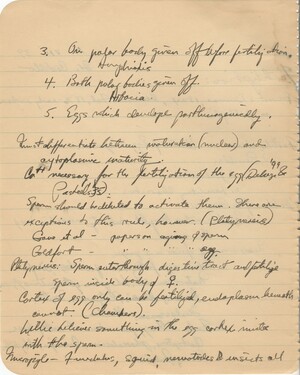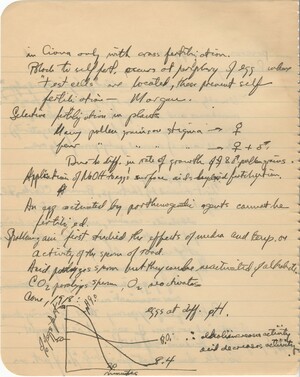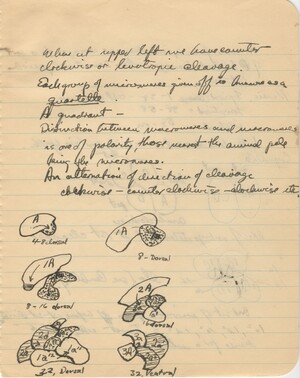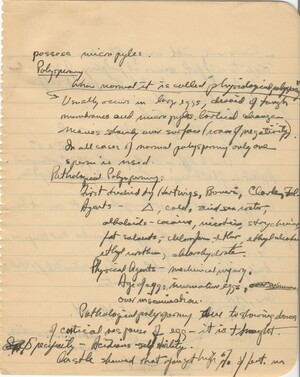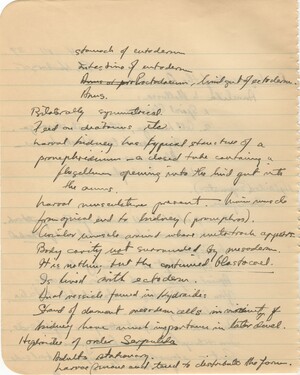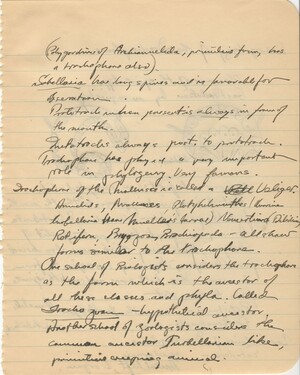Notes
Notes from Donald Costello's lecture. Trinkaus continues his notes on fertilization from the previous page with points 3-5. The rest of the page is devoted to notes on fertilization from different researchers and in different organisms
Notes from Donald Costello's lecture. Trinkaus continues his notes on fertilization from the previous page. Trinkaus includes information on "Selective fertilization in plants", and " the effects of media and temp. on activity of the sperm of toad" (includes graph)
Notes from Donald Costello's lecture. Trinkaus continues his notes on Egg centrifugation with two diagrams (most likely Nereis)
Signed "J. Philip Trinkaus, M.B.L., 1939, Embryology, II"
Notes from Donald Costello's lecture. Trinkaus begins notes on "Cell Lineage & Spiral Cleavage" with a list of researchers, their organism, and the journal citation. Trinkaus then begins with general notes on which animals exhibit spiral cleavage and how it happens
Notes from Donald Costello's lecture. Trinkaus continues his notes on spiral cleavage with information about Nereis and Crepidula (includes three cell lineage diagrams)
Notes from Donald Costello's lecture. Trinkaus illustrates elements of Lillie's fertilization theory and includes "Objections to Theory" section
Notes from Donald Costello's lecture. Trinkaus continues his notes on spiral cleavage with information on the development of micromeres, the direction of cleavage and six cell lineage diagrams
Notes from Viktor Hamburger's lecture. Trinkaus continues his list from the previous page on the derivatives of the trochophore with information about the "ectomesoderm" and the "endoderm"
Notes from Donald Costello's lecture. Trinkaus continues his notes on fertilization from the previous page with information about "Polyspermy", "Pathological polyspermy", and "Specificity"
Notes from Viktor Hamburger's lecture. Trinkaus continues his notes from the previous page on Hydroides with a long list of traits that define the organism
Notes from Viktor Hamburger's lecture. Trinkaus continues his notes on traits that define different annelids and other lower invertebrates, with special attention to the trochophore

